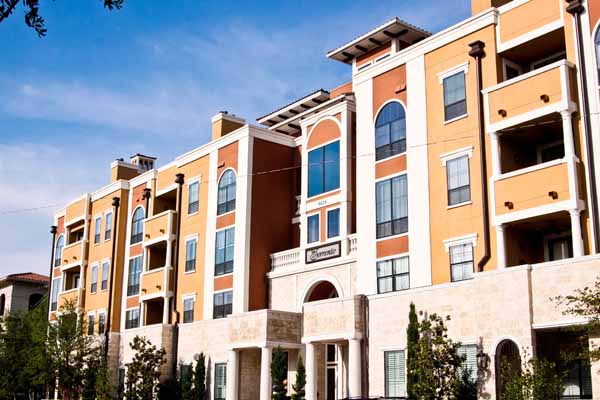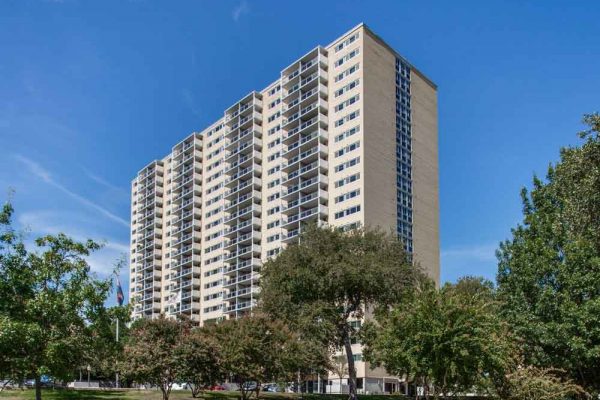HOA Management Case Study
Background and Challenge: This case involves a garden-style condominium homeowners association built in the 1970s. Before WRMC was hired in the late 2000s, the HOA was self-managed. We are often hired by previously self-managed HOA Boards that want to make a change and utilize a property management company’s professional expertise. In this case, we were brought on after their previous manager left unexpectedly and without communication, leaving behind questions of missing funds, disconnect notices from the utility companies, and a property in great need of repairs and building improvements. WRMC recognized that our first challenge would involve restoring the financial health of the HOA not only to fund the day-to-day operations of the property but also to fund the general maintenance repairs and capital improvement projects. Our second challenge would involve guiding the HOA through the long and tedious process of significant construction projects on the property.

Action and Outcome: The first course of action was to complete a forensic audit of their finances. The HOA had not conducted any audit in several years. The forensic audit results revealed that several hundred thousand dollars were missing from the HOA’s bank accounts. We proceeded to file an insurance claim that resulted in a settlement, allowing the Board to recover a portion of the missing funds. This situation highlights the imperative need for checks and balances and annual audits of financials. Auditing is a practice we recommend to all the associations we manage. After the HOA had recovered financially, and additional funds were raised through special assessments, we began the capital improvement process. We coordinated several property rehab projects, including replacing all the siding on the buildings, reconstructing the stairwells throughout the buildings, replacing windows throughout the property, overhauling the landscaping, resurfacing the pool, waterproofing the parking structures, and replacing the roofs. The manager, lead of maintenance, and the Board worked in tandem to ensure that all the improvements were per bylaws of the HOA. We followed the work scope, ensuring that we correctly managed both the budget for the improvements and the outcomes. By restoring the financial health of the HOA and improving the condition of the physical property, we have made a lasting positive impact on this HOA and, more importantly, on the residents that call it their home.

High-Rise Case Study
Background: WRMC took over the management of a 1960’s model high-rise building containing over 375 units in the mid-2000s. Our team was excited to partner with the Board and residents to help them achieve their long term goals for the building.
Challenge: The primary challenge involved addressing the dilapidated state of the building’s critical systems. The building’s pumps and motors for the boiler system had failed, forcing the facility to run on the backup system solely. Another primary concern was that the building couldn’t be sufficiently cooled in the summer or heated during the winter. The cooling tower was past its useful lifespan, and the building’s windows were leaking both wind and water around their seals.
Action and Outcome: We completely overhauled the boiler system. The boilers for domestic water and heating were replaced with energy-efficient models. We replaced the motors and pumps so that a lead-lag rotation system could be utilized. This lead-lag system reduced the total amount of energy exhausted and increased the system’s overall efficiency. Replacements continued with the cooling tower upgrading to a variable speed motor energy-efficient model, and over 1000 windows and 350 balcony doors upgrading to commercial dual pane low E glass. All of the improvements we managed and supervised led to significant advances in the building’s overall energy efficiency. The building system improvements also drastically increased comfort in the building and the residents’ quality of life.
Since assuming management of this building in the mid-2000s, WRMC tackled numerous projects ranging from total system overhauls, as described above, to upgrading carpet in the hallways to replacing the cable TV system with a new fiber-optic system. The dramatic improvements to the building combined with the market conditions have effectively increased the units’ value by an average of 150-200%.
Developer Service Case Study
Background: A high-rise condominium development in North Texas is well underway with planning, zoning, and architectural review. The 14 story, 48-unit tower will offer a 24-hour concierge, valet parking, resort-style swimming pool, expansive balconies, and fantastic views.
Challenge: The city where the high-rise condominium is being developed adopted the international fire code and is now requiring that the tower include two freight elevators instead of the one freight elevator in the original plans. This requirement would drastically increase the project’s cost and scope and take away valuable living space from the units.

Action and Outcome: Consulting with the developer, our team worked diligently to assemble site plans of preexisting high-rise condominiums to show several elevators, elevator placement, building size (floors and number of units), and building location. Upon proposing our analysis to the city and requesting a variance for the developing tower, the city agreed to grant the variance. This consultative work saved our clients a great deal of time and money in the development process.

Financial Management Case Study
Background: Before taking over the management of a garden-style condominium association, the previous management company was sitting idle, collecting a management fee, and waiting for the HOA to bottom out.
Challenge: The primary challenge was to restore the financial health of the HOA. Upon taking over management, the association had over $188,000 in outstanding dues and over $115,000 in unpaid invoices to vendors. Furthermore, the operating and reserve accounts were not at the level they needed to support long-term financial security.
Action and Outcome: We implemented a collection policy and consistently followed it to reduce the number of outstanding dues. We proactively made several changes in their overall operation by securing the best vendors and utility contracts to produce a lower cost and higher service level. We also assisted the Board in creating a financial plan to meet their long-term goals and objectives. Over two years, we managed to decrease their outstanding debt by 66% and payables by over 90% while increasing their operating account balance by 300% and reserve balance by 200%.
Master Planned & Mixed-Use Case Study
Background: With the management of master-planned and mixed-use HOAs, comes some unique opportunities and situations. This particular HOA shares a parking garage for retail customers, condominium unit owners, and the public.
Challenge: When a condominium unit is purchased, an assigned parking space from the shared garage is deeded with that unit and subsequently utilized by the owner. This is a common situation found in mixed-use HOAs and is not usually an issue. However, this parking garage was located under the retail shops and restaurants. A problem arose when the restaurant drains periodically leaked onto the condominium owners’ parking area. The leaking liquid was a nuisance, dripping onto vehicles and causing damage to the concrete. The challenge lay in addressing and repairing the leak while determining who would pay for the repairs.

Action and Outcome: We hired contractors, ranging from plumbers to engineers, and after several months of inspecting and searching, we couldn’t trace the leak back to any particular source. The solution was to create a gutter system, including a plumbing drain tie-in, to eliminate future damage caused by the leaking liquid. The “retail” ownership ended up paying for the new gutter system. Once we reached a solution, installment took place within a few weeks. It is essential to effectively address problems like this when they occur in a master-planned and mixed-use HOA. WRMC has the experience and technical savvy to navigate unique challenges like this one.


